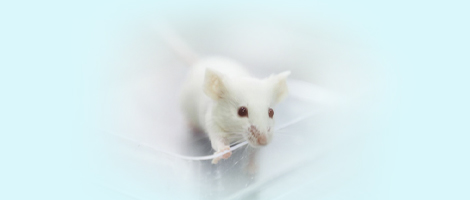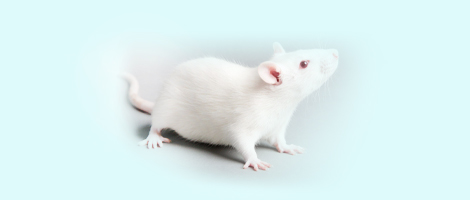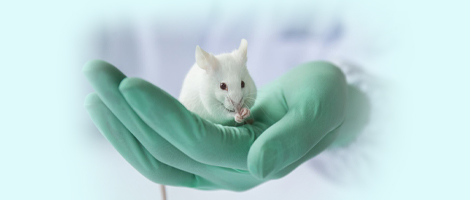













• •
王晗玥1( ), 陈嘉玮1, 高湘滨1, 罗威1,2(
), 陈嘉玮1, 高湘滨1, 罗威1,2( )(
)( ), 刘素宁1,2(
), 刘素宁1,2( )(
)( )
)
出版日期:2025-09-01
通讯作者:
罗威(1990—),男,博士,副研究员,研究方向:昆虫激素合成调控。E-mail: luowei@m.scnu.edu.cn。ORCID:0000-0002-0698-3066;作者简介:王晗玥(2000—),女,硕士研究生在读,研究方向:心侧体功能基因探究。E-mail: 629301471@qq.com。ORCID:0009-0005-7447-0296基金资助:
WANG Hanyue1( ), CHEN Jiawei1, GAO Xiangbin1, LUO Wei1,2(
), CHEN Jiawei1, GAO Xiangbin1, LUO Wei1,2( )(
)( ), LIU Suning1,2(
), LIU Suning1,2( )(
)( )
)
Published:2025-09-01
Contact:
LIU Suning(ORCID:ORCID:0009-0007-7778-7891), E-mail: liusuning@scnu.edu.cn;摘要:
本文以黑腹果蝇(Drosophila melanogaster)心侧体(corpora cardiaca,CC)为轴心,构建“发育—分泌—调控—功能”四维框架,系统梳理其在糖代谢稳态中的核心作用。果蝇遗传工具成熟、基因与人高度同源,是研究能量平衡的理想模型;心侧体与胰岛素合成细胞(insulin-producing cells,IPCs)分别对应脊椎动物胰腺α/β细胞,通过脂动激素(adipokinetic hormone,AKH)和胰岛素样肽(Drosophila insulin-like peptides,DILPs)共同调控血淋巴葡萄糖和海藻糖浓度。本文首先论述心侧体的发育过程:其起源于头部中胚层,经胚胎定型、幼虫扩增、蛹期重塑和成虫融合,形成环绕食管的双叶结构;sine oculis、glass、Notch、dpp、hh等基因和信号通路以严格的时空模式控制该过程,任一节点突变均会导致心侧体缺失或功能缺陷。心侧体可以接受来自外部的调控,整合营养、肠、脑多重输入。饥饿时,细胞表面葡萄糖感受器直接感知低血糖并促进AKH释放;肠内分泌细胞通过AstA、Bursicon α、NPF等肽类对心侧体施加正/负反馈;脑多巴胺、PDF与DILP1/2形成神经-内分泌拮抗,精细调节AKH释放。心侧体主要释放三类分子:①AKH经AKHR-cAMP-PKA途径动员脂肪体糖原与甘油三酯;②抑胰岛素激素(limostatin,Lst)经其受体抑制IPCs分泌DILPs;③胰岛素拮抗剂蛋白(imaginal morphogenesis protein-late 2,ImpL2)拮抗DILPs并抑制雷帕霉素靶标(target of rapamycin,TOR)通路,从而耦合营养状态与发育进程。AKH/AKHR轴在饥饿、高脂或热胁迫下驱动糖脂动用及觅食亢进;促前胸腺激素(prothoracicotropic hormone,PTTH)与ImpL2介导心侧体-前胸腺轴,确保临界体重后蜕皮激素适时释放;心侧体轴突支配食囊,调节排空速率;AKH-FoxO-s-LNv环路抑制饥饿诱导的睡眠丧失,维持昼夜稳态。本文综述了心侧体的发育机制、分泌激素的作用机制以及与其他组织的相互作用,其研究不仅有助于理解昆虫能量稳态的调控机制,还能为脊椎动物代谢紊乱和相关疾病的研究提供新的思路和靶点。
中图分类号:
王晗玥,陈嘉玮,高湘滨,等.模式生物黑腹果蝇心侧体功能的研究概述[J]. 实验动物与比较医学.. DOI: 10.12300/j.issn.1674-5817.2025.106.
WANG Hanyue,CHEN Jiawei,GAO Xiangbin,et al. Research Overview on Corpora Cardiaca Function of Model Animal Drosophila melanogaster[J]. Laboratory Animal and Comparative Medicine. DOI: 10.12300/j.issn.1674-5817.2025.106.
| [1] | CHOWN S, NICOLSON S W. Insect physiological ecology: mechanisms and patterns[M]. 2004: Oxford University Press DOI: 10.1093/acprof:oso/9780198515494.001.0001 . |
| [2] | DROUJININE I A, PERRIMON N. Interorgan Communication Pathways in Physiology: Focus on Drosophila[J]. Annu Rev Genet, 2016, 50: 539-570, DOI: 10.1146/annurev-genet-121415-122024 . |
| [3] | IKEYA T, GALIC M, BELAWAT P, et al. Nutrient-dependent expression of insulin-like peptides from neuroendocrine cells in the CNS contributes to growth regulation in Drosophila[J]. Curr Biol, 2002, 12(15): 1293-1300, DOI: 10.1016/s0960-9822(02)01043-6 . |
| [4] | KIM S K, RULIFSON E J. Conserved mechanisms of glucose sensing and regulation by Drosophila corpora cardiaca cells[J]. Nat, 2004, 431(7006): 316-320, DOI: 10.1038/nature02897 . |
| [5] | BROGIOLO W, STOCKER H, IKEYA T, et al. An evolutionarily conserved function of the Drosophila insulin receptor and insulin-like peptides in growth control[J]. Curr Biol, 2001, 11(4): 213-221, DOI: 10.1016/s0960-9822(01)00068-9 . |
| [6] | CALDERON D, BLECHER-GONEN R, HUANG X, et al. The continuum of Drosophila embryonic development at single-cell resolution[J]. Science, 2022, 377(6606): eabn5800, DOI: 10.1126/science.abn5800 . |
| [7] | LU T C, BRBIĆ M, PARK Y J, et al. Aging Fly Cell Atlas identifies exhaustive aging features at cellular resolution[J]. Science, 2023, 380(6650): eadg0934, DOI: 10.1126/science.adg0934 . |
| [8] | WINDING M, PEDIGO B D, BARNES C L, et al. The connectome of an insect brain[J]. Science, 2023, 379(6636): eadd9330, DOI: 10.1126/science.add9330 . |
| [9] | ÖZEL M N, GIBBS C S, HOLGUERA I, et al. Coordinated control of neuronal differentiation and wiring by sustained transcription factors[J]. Science, 2022, 378(6626): eadd1884, DOI: 10.1126/science.add1884 . |
| [10] | AGI E, REIFENSTEIN E T, WIT C, et al. Axonal self-sorting without target guidance in Drosophila visual map formation[J]. Science, 2024, 383(6687): 1084-1092, DOI: 10.1126/science.adk3043 . |
| [11] | WEAVER K J, HOLT R A, HENRY E, et al. Effects of hunger on neuronal histone modifications slow aging in Drosophila[J]. Science, 2023, 380(6645): 625-632, DOI: 10.1126/science.ade1662 . |
| [12] | FURUSAWA K, ISHII K, TSUJI M, et al. Presynaptic Ube3a E3 ligase promotes synapse elimination through down-regulation of BMP signaling[J]. Science, 2023, 381(6663): 1197-1205, DOI: 10.1126/science.ade8978 . |
| [13] | HANSON M A, GROLLMUS L, LEMAITRE B. Ecology-relevant bacteria drive the evolution of host antimicrobial peptides in Drosophila[J]. Science, 2023, 381(6655): eadg5725, DOI: 10.1126/science.adg5725 . |
| [14] | GUTIéRREZ-GARCíA K, AUMILLER K, DODGE R, et al. A conserved bacterial genetic basis for commensal-host specificity[J]. Science, 2024, 386(6726): 1117-1122, DOI: 10.1126/science.adp7748 . |
| [15] | GUO P, LI B, DONG W, et al. PI4P-mediated solid-like Merlin condensates orchestrate Hippo pathway regulation[J]. Science, 2024, 385(6709): eadf4478, DOI: 10.1126/science.adf4478 . |
| [16] | KOWALCZYK W, ROMANELLI L, ATKINS M, et al. Hippo signaling instructs ectopic but not normal organ growth[J]. Science, 2022, 378(6621): eabg3679, DOI: 10.1126/science.abg3679 . |
| [17] | JACOBS J, PAGANI M, WENZL C, et al. Widespread regulatory specificities between transcriptional co-repressors and enhancers in Drosophila[J]. Science, 2023, 381(6654): 198-204, DOI: 10.1126/science.adf6149 . |
| [18] | GANDARA L, JACOBY R, LAURENT F, et al. Pervasive sublethal effects of agrochemicals on insects at environmentally relevant concentrations[J]. Science, 2024, 386(6720): 446-453, DOI: 10.1126/science.ado0251 . |
| [19] | LEE G, PARK J H. Hemolymph sugar homeostasis and starvation-induced hyperactivity affected by genetic manipulations of the adipokinetic hormone-encoding gene in Drosophila melanogaster[J]. Genetics, 2004, 167(1): 311-323, DOI: 10.1534/genetics.167.1.311 . |
| [20] | RULIFSON E J, KIM S K, NUSSE R. Ablation of insulin-producing neurons in flies: growth and diabetic phenotypes[J]. Science, 2002, 296(5570): 1118-1120, DOI: 10.1126/science.1070058 . |
| [21] | ASHBURNER M. Polytene chromosomes. In: Ashburner M, editor. Drosophila: A laboratory handbook. Cold Spring Harbor, NY: Cold Spring Harbor Laboratory Press; 1989. pp. 33–38. |
| [22] | PARK S, BUSTAMANTE E L, ANTONOVA J, et al. Specification of Drosophila corpora cardiaca neuroendocrine cells from mesoderm is regulated by Notch signaling[J]. PLoS Genet, 2011, 7(8): e1002241, DOI: 10.1371/journal.pgen.1002241 . |
| [23] | GARCíA-FERRéS M, SáNCHEZ-HIGUERAS C, ESPINOSA-VáZQUEZ J M, et al. Specification of the endocrine primordia controlling insect moulting and metamorphosis by the JAK/STAT signalling pathway[J]. PLoS Genet, 2022, 18(10): e1010427, DOI: 10.1371/journal.pgen.1010427 . |
| [24] | DAI J D, GILBERT L I. Metamorphosis of the corpus allatum and degeneration of the prothoracic glands during the larval-pupal-adult transformation of Drosophila melanogaster: a cytophysiological analysis of the ring gland[J]. Dev Biol, 1991, 144(2): 309-326, DOI: 10.1016/0012-1606(91)90424-2 . |
| [25] | BODENSTEIN D. The postembryonic development of Drosophila[J]. Biol. Drosophila, 1965: 275-367. |
| [26] | CHEYETTE B N, GREEN P J, MARTIN K, et al. The Drosophila sine oculis locus encodes a homeodomain-containing protein required for the development of the entire visual system[J]. Neuron, 1994, 12(5): 977-996, DOI: 10.1016/0896-6273(94)90308-5 . |
| [27] | CAPOVILLA M, ELDON E D, PIRROTTA V. The giant gene of Drosophila encodes a b-ZIP DNA-binding protein that regulates the expression of other segmentation gap genes[J]. Dev, 1992, 114(1): 99-112, DOI: 10.1242/dev.114.1.99 . |
| [28] | MOHLER J, ELDON E D, PIRROTTA V. A novel spatial transcription pattern associated with the segmentation gene, giant, of Drosophila[J]. Embo j, 1989, 8(5): 1539-1548, DOI: 10.1002/j.1460-2075.1989.tb03538.x . |
| [29] | ALBERGA A, BOULAY J L, KEMPE E, et al. The snail gene required for mesoderm formation in Drosophila is expressed dynamically in derivatives of all three germ layers[J]. Dev, 1991, 111(4): 983-992, DOI: 10.1242/dev.111.4.983 . |
| [30] | BOULAY J L, DENNEFELD C, ALBERGA A. The Drosophila developmental gene snail encodes a protein with nucleic acid binding fingers[J]. Nat, 1987, 330(6146): 395-398, DOI: 10.1038/330395a0 . |
| [31] | BODMER R. The gene tinman is required for specification of the heart and visceral muscles in Drosophila[J]. Dev, 1993, 118(3): 719-729, DOI: 10.1242/dev.118.3.719 . |
| [32] | DE VELASCO B, SHEN J, GO S, et al. Embryonic development of the Drosophila corpus cardiacum, a neuroendocrine gland with similarity to the vertebrate pituitary, is controlled by sine oculis and glass[J]. Dev Biol, 2004, 274(2): 280-294, DOI: 10.1016/j.ydbio.2004.07.015 . |
| [33] | WHARTON K A, RAY R P, GELBART W M. An activity gradient of decapentaplegic is necessary for the specification of dorsal pattern elements in the Drosophila embryo[J]. Dev, 1993, 117(2): 807-822, DOI: 10.1242/dev.117.2.807 . |
| [34] | HOLLEY S A, JACKSON P D, SASAI Y, et al. A conserved system for dorsal-ventral patterning in insects and vertebrates involving sog and chordin[J]. Nat, 1995, 376(6537): 249-253, DOI: 10.1038/376249a0 . |
| [35] | PANKRATZ M J, HOCH M. Control of epithelial morphogenesis by cell signaling and integrin molecules in the Drosophila foregut[J]. Dev, 1995, 121(6): 1885-1898, DOI: 10.1242/dev.121.6.1885 . |
| [36] | BEIMAN M, SHILO B Z, VOLK T. Heartless, a Drosophila FGF receptor homolog, is essential for cell migration and establishment of several mesodermal lineages[J]. Genes Dev, 1996, 10(23): 2993-3002, DOI: 10.1101/gad.10.23.2993 . |
| [37] | PIGNONI F, BALDARELLI R M, STEINGRíMSSON E, et al. The Drosophila gene tailless is expressed at the embryonic termini and is a member of the steroid receptor superfamily[J]. Cell, 1990, 62(1): 151-163, DOI: 10.1016/0092-8674(90)90249-e . |
| [38] | GáLIKOVá M, DIESNER M, KLEPSATEL P, et al. Energy Homeostasis Control in Drosophila Adipokinetic Hormone Mutants[J]. Genetics, 2015, 201(2): 665-683, DOI: 10.1534/genetics.115.178897 . |
| [39] | WATERSON M J, CHUNG B Y, HARVANEK Z M, et al. Water sensor ppk28 modulates Drosophila lifespan and physiology through AKH signaling[J]. Proc Natl Acad Sci U S A, 2014, 111(22): 8137-8142, DOI: 10.1073/pnas.1315461111 . |
| [40] | REINHARD N, BERTOLINI E, SAITO A, et al. The lateral posterior clock neurons of Drosophila melanogaster express three neuropeptides and have multiple connections within the circadian clock network and beyond[J]. J Comp Neurol, 2022, 530(9): 1507-1529, DOI: 10.1002/cne.25294 . |
| [41] | HENTZE J L, CARLSSON M A, KONDO S, et al. The Neuropeptide Allatostatin A Regulates Metabolism and Feeding Decisions in Drosophila[J]. Sci Rep, 2015, 5: 11680, DOI: 10.1038/srep11680 . |
| [42] | SCOPELLITI A, BAUER C, YU Y, et al. A Neuronal Relay Mediates a Nutrient Responsive Gut/Fat Body Axis Regulating Energy Homeostasis in Adult Drosophila[J]. Cell Metab, 2019, 29(2): 269-284.e210, DOI: 10.1016/j.cmet.2018.09.021 . |
| [43] | YOSHINARI Y, KOSAKAMOTO H, KAMIYAMA T, et al. The sugar-responsive enteroendocrine neuropeptide F regulates lipid metabolism through glucagon-like and insulin-like hormones in Drosophila melanogaster[J]. Nat Commun, 2021, 12(1): 4818, DOI: 10.1038/s41467-021-25146-w . |
| [44] | NäSSEL D R, ZANDAWALA M. Hormonal axes in Drosophila: regulation of hormone release and multiplicity of actions[J]. Cell Tissue Res, 2020, 382(2): 233-266, DOI: 10.1007/s00441-020-03264-z . |
| [45] | BRACO J T, NELSON J M, SAUNDERS C J, et al. Modulation of Metabolic Hormone Signaling via a Circadian Hormone and Biogenic Amine in Drosophila melanogaster[J]. Int J Mol Sci, 2022, 23(8) DOI: 10.3390/ijms23084266 . |
| [46] | JOHNSON E C, SHAFER O T, TRIGG J S, et al. A novel diuretic hormone receptor in Drosophila: evidence for conservation of CGRP signaling[J]. J Exp Biol, 2005, 208(Pt 7): 1239-1246, DOI: 10.1242/jeb.01529 . |
| [47] | JOHNSON E C, BOHN L M, BARAK L S, et al. Identification of Drosophila neuropeptide receptors by G protein-coupled receptors-beta-arrestin2 interactions[J]. J Biol Chem, 2003, 278(52): 52172-52178, DOI: 10.1074/jbc.M306756200 . |
| [48] | POST S, LIAO S, YAMAMOTO R, et al. Drosophila insulin-like peptide dilp1 increases lifespan and glucagon-like Akh expression epistatic to dilp2[J]. Aging Cell, 2019, 18(1): e12863, DOI: 10.1111/acel.12863 . |
| [49] | AHMAD M, HE L, PERRIMON N. Regulation of insulin and adipokinetic hormone/glucagon production in flies[J]. Wiley Interdiscip Rev Dev Biol, 2020, 9(2): e360, DOI: 10.1002/wdev.360 . |
| [50] | KANNAN K, FRIDELL Y W. Functional implications of Drosophila insulin-like peptides in metabolism, aging, and dietary restriction[J]. Front Physiol, 2013, 4: 288, DOI: 10.3389/fphys.2013.00288 . |
| [51] | GäDE G, AUERSWALD L, MARCO H G. Flight fuel and neuropeptidergic control of fuel mobilisation in the twig wilter, Holopterna alata (Hemiptera, Coreidae)[J]. J Insect Physiol, 2006, 52(11-12): 1171-1181, DOI: 10.1016/j.jinsphys.2006.08.005 . |
| [52] | STEELE J E. Occurrence of a Hyperglycæmic Factor in the Corpus Cardiacum of an Insect[J]. Nat, 1961, 192(4803): 680-681, DOI: 10.1038/192680a0 . |
| [53] | RHEA J M, WEGENER C, BENDER M. The proprotein convertase encoded by amontillado (amon) is required in Drosophila corpora cardiaca endocrine cells producing the glucose regulatory hormone AKH[J]. PLoS Genet, 2010, 6(5): e1000967, DOI: 10.1371/journal.pgen.1000967 . |
| [54] | LORENZ M W, GäDE G. Hormonal regulation of energy metabolism in insects as a driving force for performance[J]. Integr Comp Biol, 2009, 49(4): 380-392, DOI: 10.1093/icb/icp019 . |
| [55] | TOPRAK U. The Role of Peptide Hormones in Insect Lipid Metabolism[J]. Front Physiol, 2020, 11: 434, DOI: 10.3389/fphys.2020.00434 . |
| [56] | HEWES R S, TAGHERT P H. Neuropeptides and neuropeptide receptors in the Drosophila melanogaster genome[J]. Genome Res, 2001, 11(6): 1126-1142, DOI: 10.1101/gr.169901 . |
| [57] | PARK Y, KIM Y J, ADAMS M E. Identification of G protein-coupled receptors for Drosophila PRXamide peptides, CCAP, corazonin, and AKH supports a theory of ligand-receptor coevolution[J]. Proc Natl Acad Sci U S A, 2002, 99(17): 11423-11428, DOI: 10.1073/pnas.162276199 . |
| [58] | STAUBLI F, JORGENSEN T J, CAZZAMALI G, et al. Molecular identification of the insect adipokinetic hormone receptors[J]. Proc Natl Acad Sci U S A, 2002, 99(6): 3446-3451, DOI: 10.1073/pnas.052556499 . |
| [59] | MARCHAL E, SCHELLENS S, MONJON E, et al. Analysis of Peptide Ligand Specificity of Different Insect Adipokinetic Hormone Receptors[J]. Int J Mol Sci, 2018, 19(2) DOI: 10.3390/ijms19020542 . |
| [60] | ORYAN A, WAHEDI A, PALUZZI J V. Functional characterization and quantitative expression analysis of two GnRH-related peptide receptors in the mosquito, Aedes aegypti[J]. Biochem Biophys Res Commun, 2018, 497(2): 550-557, DOI: 10.1016/j.bbrc.2018.02.088 . |
| [61] | ZANDAWALA M, HAMOUDI Z, LANGE A B, et al. Adipokinetic hormone signalling system in the Chagas disease vector, Rhodnius prolixus[J]. Insect Mol Biol, 2015, 24(2): 264-276, DOI: 10.1111/imb.12157 . |
| [62] | ALFA R W, PARK S, SKELLY K R, et al. Suppression of insulin production and secretion by a decretin hormone[J]. Cell Metab, 2015, 21(2): 323-334, DOI: 10.1016/j.cmet.2015.01.006 . |
| [63] | SLOTH ANDERSEN A, HERTZ HANSEN P, SCHAFFER L, et al. A new secreted insect protein belonging to the immunoglobulin superfamily binds insulin and related peptides and inhibits their activities[J]. J Biol Chem, 2000, 275(22): 16948-16953, DOI: 10.1074/jbc.M001578200 . |
| [64] | YAMANAKA Y, WILSON E M, ROSENFELD R G, et al. Inhibition of insulin receptor activation by insulin-like growth factor binding proteins[J]. J Biol Chem, 1997, 272(49): 30729-30734, DOI: 10.1074/jbc.272.49.30729 . |
| [65] | GARBE J C, YANG E, FRISTROM J W. IMP-L2: an essential secreted immunoglobulin family member implicated in neural and ectodermal development in Drosophila[J]. Dev, 1993, 119(4): 1237-1250, DOI: 10.1242/dev.119.4.1237 . |
| [66] | HONEGGER B, GALIC M, KöHLER K, et al. Imp-L2, a putative homolog of vertebrate IGF-binding protein 7, counteracts insulin signaling in Drosophila and is essential for starvation resistance[J]. J Biol, 2008, 7(3): 10, DOI: 10.1186/jbiol72 . |
| [67] | ALIC N, HODDINOTT M P, VINTI G, et al. Lifespan extension by increased expression of the Drosophila homologue of the IGFBP7 tumour suppressor[J]. Aging Cell, 2011, 10(1): 137-147, DOI: 10.1111/j.1474-9726.2010.00653.x . |
| [68] | LAYALLE S, ARQUIER N, LéOPOLD P. The TOR pathway couples nutrition and developmental timing in Drosophila[J]. Dev Cell, 2008, 15(4): 568-577, DOI: 10.1016/j.devcel.2008.08.003 . |
| [69] | COLOMBANI J, BIANCHINI L, LAYALLE S, et al. Antagonistic actions of ecdysone and insulins determine final size in Drosophila[J]. Science, 2005, 310(5748): 667-670, DOI: 10.1126/science.1119432 . |
| [70] | SARRAF-ZADEH L, CHRISTEN S, SAUER U, et al. Local requirement of the Drosophila insulin binding protein imp-L2 in coordinating developmental progression with nutritional conditions[J]. Dev Biol, 2013, 381(1): 97-106, DOI: 10.1016/j.ydbio.2013.06.008 . |
| [71] | CALDWELL P E, WALKIEWICZ M, STERN M. Ras activity in the Drosophila prothoracic gland regulates body size and developmental rate via ecdysone release[J]. Curr Biol, 2005, 15(20): 1785-1795, DOI: 10.1016/j.cub.2005.09.011 . |
| [72] | MIRTH C, TRUMAN J W, RIDDIFORD L M. The role of the prothoracic gland in determining critical weight for metamorphosis in Drosophila melanogaster[J]. Curr Biol, 2005, 15(20): 1796-1807, DOI: 10.1016/j.cub.2005.09.017 . |
| [73] | NOYES B E, KATZ F N, SCHAFFER M H. Identification and expression of the Drosophila adipokinetic hormone gene[J]. Mol Cell Endocrinol, 1995, 109(2): 133-141, DOI: 10.1016/0303-7207(95)03492-p . |
| [74] | KIM J, NEUFELD T P. Dietary sugar promotes systemic TOR activation in Drosophila through AKH-dependent selective secretion of Dilp3[J]. Nat Commun, 2015, 6: 6846, DOI: 10.1038/ncomms7846 . |
| [75] | YAMANAKA N, REWITZ K F, O'CONNOR M B. Ecdysone control of developmental transitions: lessons from Drosophila research[J]. Annu Rev Entomol, 2013, 58: 497-516, DOI: 10.1146/annurev-ento-120811-153608 . |
| [76] | KIM S K, TSAO D D, SUH G S B, et al. Discovering signaling mechanisms governing metabolism and metabolic diseases with Drosophila[J]. Cell Metab, 2021, 33(7): 1279-1292, DOI: 10.1016/j.cmet.2021.05.018 . |
| [77] | GRöNKE S, MüLLER G, HIRSCH J, et al. Dual lipolytic control of body fat storage and mobilization in Drosophila[J]. PLoS Biol, 2007, 5(6): e137, DOI: 10.1371/journal.pbio.0050137 . |
| [78] | ARRESE E L, ROJAS-RIVAS B I, WELLS M A. The use of decapitated insects to study lipid mobilization in adult Manduca sexta: effects of adipokinetic hormone and trehalose on fat body lipase activity[J]. Insect Biochem Mol Biol, 1996, 26(8-9): 775-782, DOI: 10.1016/s0965-1748(96)00024-0 . |
| [79] | GäDE G. Activation of fat body glycogen phosphorylase in Locusta migratoria by corpus cardiacum extract and synthetic adipokinetic hormone[J]. J Insect Physiol, 1981, 27(3): 155-161, DOI: https://doi.org/10.1016/0022-1910(81)90122-0 . |
| [80] | AUERSWALD L, GäDE G. Endocrine control of TAG lipase in the fat body of the migratory locust, Locusta migratoria[J]. Insect Biochem Mol Biol, 2006, 36(10): 759-768, DOI: 10.1016/j.ibmb.2006.07.004 . |
| [81] | TOMCALA A, BáRTŮ I, SIMEK P, et al. Locust adipokinetic hormones mobilize diacylglycerols selectively[J]. Comp Biochem Physiol B Biochem Mol Biol, 2010, 156(1): 26-32, DOI: 10.1016/j.cbpb.2010.01.015 . |
| [82] | AUERSWALD L, GäDE G. The role of Ins(1,4,5)P(3) in signal transduction of the metabolic neuropeptide Mem-CC in the cetoniid beetle, Pachnoda sinuata[J]. Insect Biochem Mol Biol, 2002, 32(12): 1793-1803, DOI: 10.1016/s0965-1748(02)00138-8 . |
| [83] | GäDE G, AUERSWALD L. Mode of action of neuropeptides from the adipokinetic hormone family[J]. Gen Comp Endocrinol, 2003, 132(1): 10-20, DOI: 10.1016/s0016-6480(03)00159-x . |
| [84] | VAN MARREWIJK W J A, VAN DEN BROEK A T M, BEENAKKERS A M T. Adipokinetic hormone is dependent on extracellular Ca2+ for its stimulatory action on the glycogenolytic pathway in locust fat body in vitro[J]. Insect Biochem, 1991, 21(4): 375-380, DOI: https://doi.org/10.1016/0020-1790(91)90003-W . |
| [85] | VROEMEN S F, VAN DER HORST D J, VAN MARREWIJK W J. New insights into adipokinetic hormone signaling[J]. Mol Cell Endocrinol, 1998, 141(1-2): 7-12, DOI: 10.1016/s0303-7207(98)00079-3 . |
| [86] | YU Y, HUANG R, YE J, et al. Regulation of starvation-induced hyperactivity by insulin and glucagon signaling in adult Drosophila[J]. Elife, 2016, 5 DOI: 10.7554/eLife.15693 . |
| [87] | MOCHANOVá M, TOMČALA A, SVOBODOVá Z, et al. Role of adipokinetic hormone during starvation in Drosophila[J]. Comp Biochem Physiol B Biochem Mol Biol, 2018, 226: 26-35, DOI: 10.1016/j.cbpb.2018.08.004 . |
| [88] | HUANG R, SONG T, SU H, et al. High-fat diet enhances starvation-induced hyperactivity via sensitizing hunger-sensing neurons in Drosophila[J]. Elife, 2020, 9 DOI: 10.7554/eLife.53103 . |
| [89] | REWITZ K F, YAMANAKA N, GILBERT L I, et al. The insect neuropeptide PTTH activates receptor tyrosine kinase torso to initiate metamorphosis[J]. Science, 2009, 326(5958): 1403-1405, DOI: 10.1126/science.1176450 . |
| [1] | 徐龙梅, 沈如凌, 范春, 吴薇. 基于ΦC31整合酶和载体质粒pUASTattB的12株果蝇转基因阴性对照品系的建立[J]. 实验动物与比较医学, 2023, 43(5): 541-547. |
| [2] | 唐润东, 宋思远, 吴薇. 饮食中糖分控制对雌黑腹果蝇寿命和中肠干细胞的影响[J]. 实验动物与比较医学, 2019, 39(2): 118-123. |
| 阅读次数 | ||||||
|
全文 |
|
|||||
|
摘要 |
|
|||||